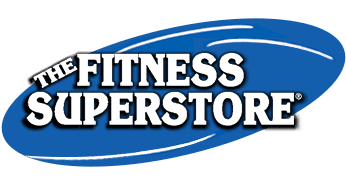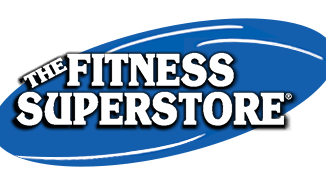What is Pilates? This question has become increasingly common as more people discover the transformative benefits of this exercise system, which emphasizes controlled movements, proper breathing, and the mind-body connection. Developed by Joseph Pilates in the early 20th century, Pilates has become one of the most effective ways to build core strength, improve flexibility, and enhance overall well-being. For Albuquerque residents looking to build strength and enhance mobility, Pilates offers a great low-impact workout that accommodates the active lifestyle of many and can be practiced year-round at home.
Benefits of Pilates for Strength and Flexibility
The benefits of Pilates go far beyond simple exercises, addressing strength, flexibility, posture, and mental health. Unlike traditional strength training, Pilates focuses on functional movement patterns that engage multiple muscle systems, especially the stabilizing muscles supporting proper posture and movement.
Core strength is a major benefit of Pilates. It targets the “powerhouse” muscles—deep abdominal muscles, pelvic floor, diaphragm, and multifidus muscles—that support the spine. This approach reduces back pain risk and builds a strong foundation for movement.
Pilates also improves flexibility, promoting dynamic flexibility through controlled stretching integrated with strengthening exercises. This helps improve performance in daily activities and other forms of exercise.
Posture benefits are significant as Pilates targets imbalances caused by sitting or sedentary work. Exercises strengthen muscles that support spinal alignment, combating rounded shoulders and forward head posture often seen in people working long hours at desks.
Other key benefits include improved balance, coordination, and mental health. Pilates enhances proprioception and body awareness, translating to better balance and reduced fall risk. The breathing techniques used in Pilates can also reduce stress, improve focus, and contribute to overall mental well-being.
Injury prevention and rehabilitation are key advantages for active Albuquerque residents, particularly for those involved in outdoor activities like hiking, cycling, or recreational sports. Pilates supports proper movement patterns, reducing the risk of common overuse injuries while aiding recovery.
Is Pilates Good for Weight Loss or Toning?
So, is Pilates good for weight loss? While it may not burn as many calories as high-intensity cardio, Pilates supports weight loss by building lean muscle mass, which increases resting metabolic rate. More muscle means a higher calorie burn even at rest.
Body toning is another result of Pilates, as it builds long, lean muscles without the bulk of heavy weight training. Controlled movements improve muscle endurance and definition, creating a toned physique.
Pilates can burn 200-450 calories per session, depending on intensity and type of practice. While less than running or cycling, the metabolic benefits continue even after the workout ends. Pilates also improves posture, helping you look leaner, even before significant weight loss occurs.
The mindfulness aspect of Pilates helps some with healthier eating habits and a more positive relationship with food, which can contribute to weight loss. Pilates also helps reduce cortisol levels, decreasing stress-related eating.
For best results, combine Pilates with cardio and a balanced diet. Regular practice, combined with proper nutrition, leads to gradual, sustainable changes in body composition.
How to Start Pilates at Home Safely and Effectively
Learning how to start Pilates at home safely involves understanding form, progression, and safety. Proper space is important—ensure you have enough room to lie down and perform exercises comfortably. A quality exercise mat is essential for providing cushioning while maintaining stability.
Start with basic exercises that focus on breathing, core engagement, and neutral spine alignment. The “Pilates hundred,” modified planks, and basic bridges are great starting points. Focus on breathing deeply and engaging your core to support movement.
Progress gradually with more challenging exercises as your flexibility, strength, and coordination improve. Avoid rushing into advanced movements without mastering the basics first to prevent injury.
Quality over quantity is essential in Pilates. Perform fewer repetitions with perfect form rather than more repetitions with poor technique. Consistency is key—short, frequent sessions are more effective than long, infrequent ones.
Consider watching videos from certified instructors who emphasize proper form and technique. You can also see if your local gym offers group classes. No matter how you start, avoid pushing yourself past your limits and always listen to your body.
Equipment Needed for Pilates Workouts at Home in Albuquerque
The equipment needed for Pilates at home includes a quality exercise mat. Pilates mats should be thicker than yoga mats—around 10-15mm—for spine and joint protection. Look for mats with good grip to prevent slipping during exercises.
Resistance bands are versatile and take up minimal storage space. They add resistance to exercises, helping you increase intensity as you progress. Small props like Pilates balls, magic circles, and foam rollers can enhance your workout and provide support for certain exercises.
Stability balls challenge core stability and balance and are perfect for various Pilates exercises. Be sure to choose the right size ball for your height—your hips and knees should form 90-degree angles when sitting on it.
For advanced practitioners, a reformer-style machine brings studio benefits to your home. Portable reformers and tower systems provide spring resistance for smooth, controlled movements.
Storing equipment in an organized way will keep your Pilates space functional and neat. Consider using wall-mounted racks or storage baskets to keep your props easily accessible.
At The Fitness Superstore, we offer Pilates equipment and fitness accessories to enhance your home workouts, from mats and resistance bands to reformers and accessories. Our expert staff can help you choose the right tools for your Pilates practice and goals. Contact The Fitness Superstore today for more information.







